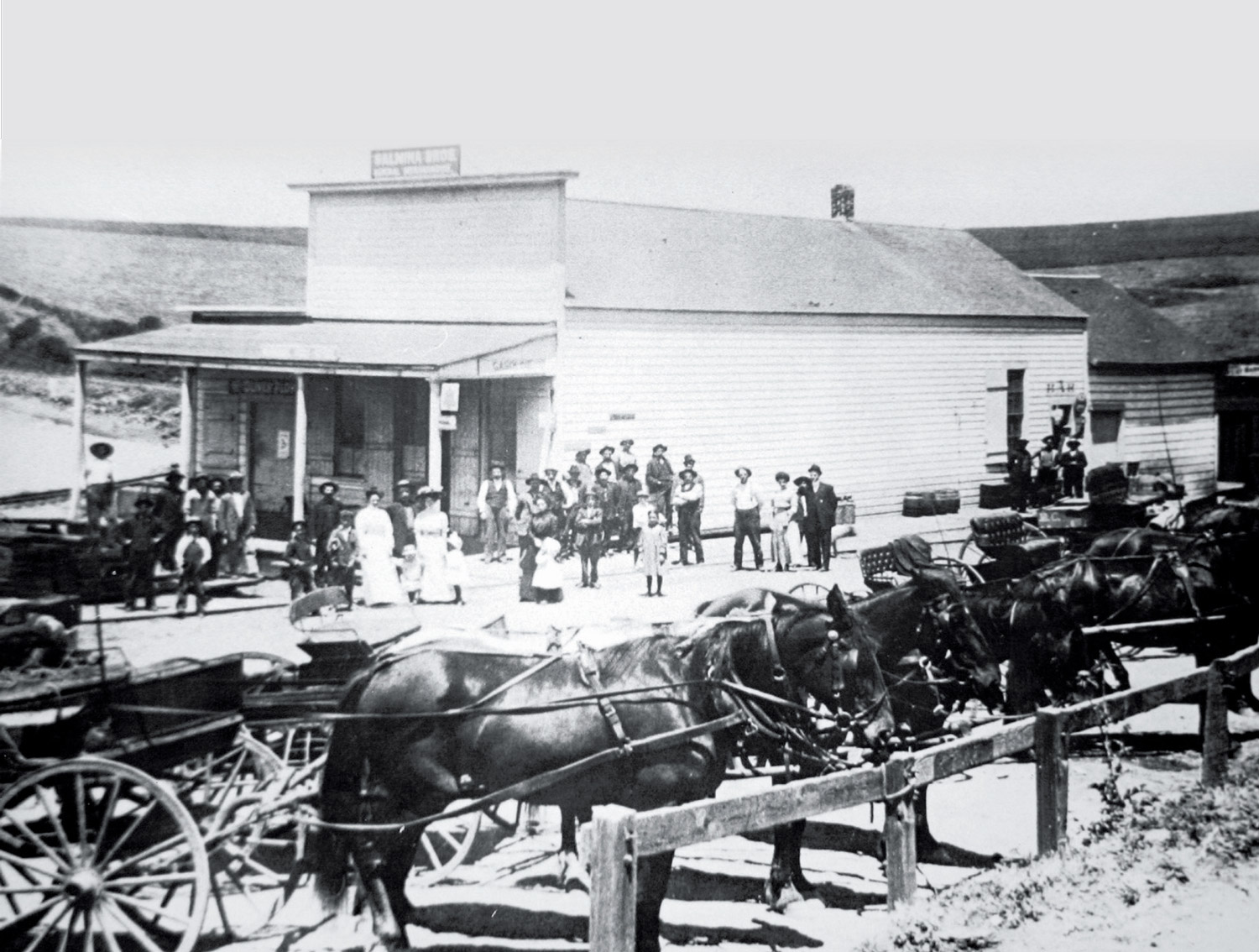Help Wanted: Tractor Repairs and Teachers
AFFORDABLE HOUSING CRISIS IMPERILS SUSTAINABILITY OF SMALL RURAL COMMUNITIES AND, WITH THEM, WEST MARIN’S AGRICULTURAL FUTURE
Western Marin County, colloquially referred to as West Marin, is a region world famous not only for its breathtaking natural beauty, but also for trailblazing sustainable and organic agriculture. From a distance the region looks like a picture-perfect ecosystem, but zoom in and the story becomes more complex, as small rural communities there struggle to survive.
Albert Straus, native son and the founder and CEO of Straus Family Creamery based just on the outskirts of the West Marin town of Marshall, has strong feelings about the current situation, and what it will take to help the region and its small towns thrive again.
Straus espouses a big-picture view of conservation, one that includes supporting the next generation of farmers, agricultural employees, teachers and other agricultural industry-related service employees with access to affordable land and housing.
“We cannot be sustainable if our employees cannot live here, if they have to commute long distances from Santa Rosa, Rohnert Park, Petaluma, Vallejo,” says Straus. “Our agriculture will not be sustainable unless we create affordable housing and a vibrant local community to support our food system.”
Straus grew up on the family dairy farm, established by his father in the early 1940s. Straus went to school in a one-room schoolhouse, attended Tomales High and studied dairy science at Cal Poly San Luis Obispo. When he graduated from college and came home to West Marin in 1977, he understood that environmentally sound practices were imperative, and also recognized the growing market potential for organic food.
He led the way, shepherding Straus Family Creamery to become the first 100% certified organic dairy west of the Mississippi. With a complex business model that includes constant improvements in environmental practices, including carbon sequestration and a methane digester that captures methane from cows’ manure, the family dairy farm has itself thrived and expanded—and served as a national and international model for alternative agriculture.
Meanwhile, Straus has watched up close as the community around his dairy struggles. The 2010 census counted 204 people in the town of Tomales and approximately 50 in the town of Marshall, and those numbers have shrunk even further according to locals. “The schools have lost their population of students, the roads are not maintained, and meanwhile the real estate prices have climbed way up. Wealthy ‘weekenders’ are buying second homes, and their houses sit empty most of the time while working people cannot afford to live here,” says Straus. In addition, many of the existing long-term rentals have now been put on the market as higher-priced Airbnb’s for tourists.
In immediate terms, while Straus can provide on-site housing for a portion of his farm employees, all the creamery employees must commute, making it difficult for the dairy to reach its carbon-neutral goal.
Across the United States, the demise of small rural communities is well-documented and much-discussed. As our economy has tilted toward high-tech endeavors, urban centers have grown and our rural communities have lost both employment opportunities and full-time residents. With the decline of prosperity and civic vibrancy come the ills of poverty, including underperforming school systems and drug and alcohol addiction. According to research by the Economic Innovation Group, which created a system of measurement called the Distressed Communities Index that tracks multiple factors to determine the overall health and prosperity of communities across America, in 2018 “Rural zip codes exhibited the most volatility and were by far the most likely to be downwardly mobile on the index, with 30 percent dropping into a lower quintile of prosperity—nearly twice the proportion of urban zip codes that fell into a lower quintile.”
This does not need to be the fate of West Marin communities, say Straus and others in the region who seek affordable housing and community investment in agriculture. These advocates believe that West Marin, having set the national bar for successful organic and small-scale agriculture, is now in a position to lead the way and become a model for the rest of the country in rural revival, reinvigorating sustainable communities around that small-scale agriculture. “West Marin has been so progressive in so many ways,” says Josh Hollis, who sits on the board of the East Shore Planning Group, a small governing entity for communities on the East Shore of Tomales Bay, “so why not this?”
The “this” Hollis refers to is the idea is that if we invest in local farmers and their employees, we support both the people and wildlife that make up the local environment, and insure the success of an alternative to large-scale chemical-based agriculture.
“I’ve often thought that the phrase ‘farm to table’ should be “home to farm to table,” says Kim Thompson, director of Community Land Trust Organization of West Marin (CLAM), an organization based in Point Reyes. “That way we would extend our view of the food system to include housing for farmworkers and other employees as a foundational piece of sustainable agriculture.”
That critical housing piece is at risk across West Marin, Thompson says, which means the functioning of the system as a whole is also at risk. Over the past two decades the average home price in Marin County has increased a million dollars, from just over $400,000 to $1,400,000, and thanks to the natural beauty of the farms, the Point Reyes Seashore and Tomales Bay, land and housing prices in West Marin have followed the trend. The average home sale in Marshall hovered above $1 million this past winter and spring.
“Many who would migrate to West Marin with the energy and passion and vision to work in sustainable agriculture just don’t, because they lack that fundamental piece: the home piece,” says Thompson. CLAM aims to bridge the gap between very high real estate prices and the modest incomes of working people in West Marin. The model is similar to the model used by Marin Agricultural Land Trust (MALT), co-founded by Albert Straus’ late mother, Ellen Straus, that preserves land for agricultural use. Funded primarily by private donations and loans, CLAM purchases local properties and holds them in trust for the community, ensuring that that housing will remain affordable. “Affordable housing is something that most people support,” says Thompson. “We are a community-based organization and have over 300 partners. West Marin residents understand the value of having working people who are able to live here.”
What Straus and Thompson both say is that the multiple stakeholders in the area—CLAM, Audubon Canyon Ranch, MALT, the National Park Service, the County and local community organizations invested in the health of West Marin—must come together to find solutions. Those solutions will come primarily in the form of preserving and creating locations and properties that working people can afford.
As an example of the type of project that might benefit from such cooperation, Straus cites the Dunn Ranch property located between Point Reyes Station and Marshall. Two years ago, Straus brought his proposal called “Revitalizing Rural Communities, Agriculture and Conservation,” to the California Coastal Commission. The Dunn family decided not to renew their lease with the Golden Gate National Recreation Area, the owner of the land, so Straus suggested a land trust conservation model based on the Countryside Initiative that made the Cuyahoga Valley National Park in Ohio home into 12 small-scale farms committed to sustainable agriculture. This model would offer an affordable housing opportunity to the next generation of farmers and their employees.
“Whether it is the Dunn Ranch or not where we move forward, places like that property are exactly where we need to be headed, where we all need to come together with a proposal,” says Thompson. “We need community entities to create stability for the human part of the sustainable food system.”
East Shore Planning Group board member Josh Hollis points out that the language of California Coastal Act of 1976 supports keeping agricultural properties in use, and says that he sees the current California Coastal Commission “trying to figure it out, trying to find that balance between agriculture and the environment.” He also believes that there has been a shift of late, that the moment is finally right for cooperation. From Hollis’ perspective, “Ag and environmental are beginning to put aside our small differences and look for agreements.” He also believes that Albert Straus’s leadership and powerful voice are essential for the survival of the communities and farms that are responsible for the rich history and vibrancy of the region.
For Straus, it all comes down to a long-term vision. “I’m pushing this forward as much as I can,” says Straus. “The question here is how do we create a vibrant long-term community? As environmentalists we cannot think in black and white—that farms are bad and nature and wildlife are good. It all inter-ties.”







